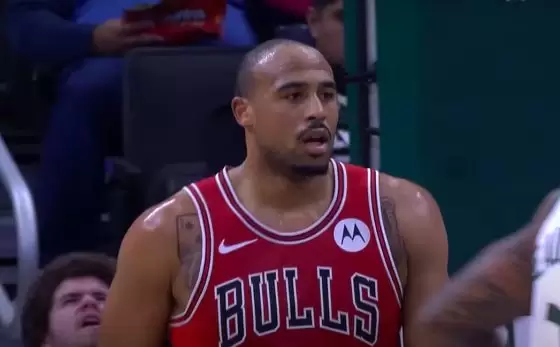The Boston Celtics came into the off-season with two clear-cut needs: playmaking and bench shooting. Both of those needs have been fulfilled, and the Celtics now have one of the deepest rosters in the NBA. However, as part of the deal to land Malcolm Brogdon, the Celtics had to part ways with Daniel Theis, and now, their center rotation is looking rather thin.
As things currently stand, Luke Kornet is the team’s primary backup center and will be starting the season with a significantly increased role to the one we’ve seen him occupy in recent seasons. Of course, Kornet has impressed in short stretches, primarily due to his rim protection, pick-and-roll defense as the drop man, and ability to operate as the “popper” on offense.
“We’re really high on Luke. We’ve been really high on Luke. We thought he had a terrific G-League season, and think that he can step right in and be a passer, a ball-handler, a mover, a screener, and a roller when need be. We’ll probably add one more person that can play in that area, but we’re really believing in Luke as not only depth that can help fill out the roster, but also be ready to help us, and help us win. I think he’s at that stage where he can help us do that,” Brad Stevens said during a July 12 press conference.
Yet, the question isn’t whether Kornet has improved, but rather, can he be an impactful member of a championship contending team — especially a team that likes to switch defensive actions consistently and aggressively? While Kornet is a talented rim protector, and can respectably read an offense, he is a drop defending big man.
At times throughout last season, we did see Ime Udoka switch his defensive play to a system where positions 1-through-4 would switch actions while the 5-man dropped – it was a technique Boston experimented with against Stephen Curry in the NBA Finals, but it also made appearances throughout the regular season and earlier post-season series.
As you can see in the above defensive possession, Robert Williams operates in a slight drop, but because Stephen Curry receives the screen high up the floor, Boston’s key defensive big man has to meet the superstar guard at the perimeter. The biggest difference here is that Williams is incredibly capable of guarding smaller players due to his lateral quickness and ability to flip his hips and change direction if he gets beaten off the dribble.
When you look at Kornet, he doesn’t boast that same level of mobility, which means he will probably be asked to operate in a deeper drop, and while that’s totally fine, good shooters will utilize the pocket of space that depth creates and will either engage him and blow by, or pull up for an open middie.
Luckily, Kornet is a legitimate 7-footer and his presence in front of a shooter is enough to force them to slightly alter their release point and that can make all the difference. Still, when we saw the Texas native defending closer to the perimeter, it primarily came off a switch that saw him engage the ball-handler, as he went from a shallow drop into a man-to-man defense — similar to what we saw from Al Horford in the NBA Finals.
Overall, though, Kornet provided admirable defense, both in the G-League and during his limited NBA game time, as shown by the below-shot chart, which depicts conversion rates when guarded by the 7’2’’ center.
It’s worth remembering that most of these shot attempts occurred against G-League competition, and the conversion rate will potentially increase against NBA-level players. Still, there is plenty of defensive upside for Kornet as a rotational big off the bench, assuming Udoka is willing to adjust his coverages to fit him into the system.
On offense, we have a similar story – Kornet isn’t a rim runner, and won’t provide the above-the-rim play that you will get from Robert Williams, but he is a reliable screener, can spread the court, and is capable as a roller or short-roll pivot point.
These two possessions do a good job of illustrating the type of pick-and-roll offense you’re going to get from Kornet. In the first possession, you get a smidgen of perimeter playmaking with the elbow hand-off, followed by a good roll to the rim and uncontested finish. While in the second possession, you see the ball-handler reject the screen, causing Kornet to pop onto the perimeter and space the floor — these are essentially the roles we’re going to see him occupy for Boston next season, along with being an off-ball screener and dunker spot occupier.
However, I have been rather vocal about my belief that Boston needs to find a way of matching Robert Williams’ minutes, and ideally, that would mean finding another rim-runner who can impact the floor with rebounding, and some above-the-rim play (think Dwight Howard, or before he signed an offer sheet, JaVale McGee). While Kornet fills a lot of holes that Daniel Theis left behind, it was clear from the outset that Theis didn’t fit Udoka’s style of play, so logic dictates that Kornet may find it difficult to nail down a regular rotation spot, too.
Still, with the Evan Fournier TPE due to expire today (July 18) it’s fair to assume that Stevens wasn’t simply paying lip service when he discussed his belief that Kornet could be an important member of the rotation. Unfortunately, with Boston being a genuine championship contender, the jury will remain out on whether Kornet being a primary backup option is enough to see the Celtics through the regular season and into the playoffs.






